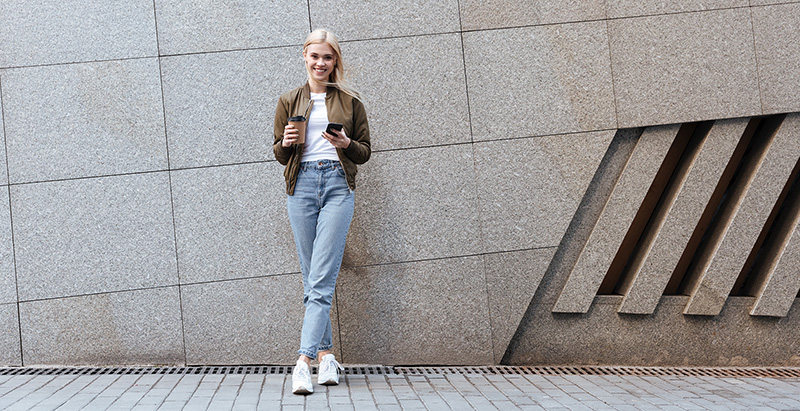Shots are used in videos and films to create sequences. We give different shot sizes names so we can refer to them in scripts and storyboards. Different teams call them by different names, but here are the 7 basic shot sizes as I was taught and use regularly when communicating with my team or students. I will also give additional names of each that I’ve heard over the years and also additional references if you want to dig deeper into each shot size. Along the way, I’ve included links to some very helpful websites including StudioBinder, PremiumBeat, and others. If you want to find out more…these are excellent resources that I recommend.
Each shot size has an acronym for easily referring to it in a script without writing the entire phrase out each time.
The seven basic shot sizes (from widest to tightest) are:
ELS – Extreme Long Shot
LS – Long Shot
MLS – Medium Long Shot
MS – Medium Shot
MCU – Medium Close Up
CU – Close Up
ECU – Extreme Close Up
Extreme Long Shot
An Extreme Long Shot is anything wider than a long shot. It can be used to show the landscape of a scene, an exterior location, or just to give us emotional separation from characters. It will sometimes be referred to as an establishing shot, shown at the beginning of a film or scene to signify the changing of a location. This shot can also be called an Extreme Wide Shot (EWS).

Long Shot
A Long Shot showcases a subject head to toe. I’d personally have just a little more headroom than footroom, but this is the perfect shot to show full body movement while still maintaining the surroundings.
“Also known as a full shot or a wide shot…It also shows the subject in relation to the surrounding environment or to other characters. Long shots generally focus more on the action and less on emotion.” – NFI.edu

Medium Shot
I’m going to skip to the Medium Shot next. Of the seven-shot sizes, I would argue that it tends to be one of the most common shots. A Medium Shot is from the waist up, with good headroom. It is typically used for interviews, dialogue scenes, and in live sports production at the end of a play. (This is another base shot)
“It should be considered a personal shot, as it frames a character so it appears that the audience is in a conversation with them. If you were going to choose a lens for this type of shot, you’d most likely use something between a 35mm and 50mm.” – PremiumBeat

Medium Long Shot
A Medium Long Shot then would be somewhere between a Long Shot and a Medium Shot. It typically starts with good headroom and cuts off somewhere around the knee. I’ve heard discussions about whether to cut this shot off above or below the knee…but personally, I feel it could be either. On the flip side, the internet seems to agree that you should not cut this shot off AT the knee…so pick one. You may easily have a medium-long shot with more than one person in the shot.
“also called medium full shot…This shot size falls between a normal medium shot and a long (full) shot.” – StudioBinder

Medium Close Up
A Medium Close Up is from the chest up. Frankly, this is very close to a medium shot. It is the next step on the way in to a Close Up. You may use it instead of the Medium Shot when you want to get closer, show more emotion, or hide more of the background. This shot is also commonly used for interviews.
“In cinematography…A neutral shot, the medium close-up captures the subject’s facial expression and body language while still leaving some background in the frame.” – Adobe


Close-Up
The close-up shot is about a person’s emotions. Their head should be in the frame, but headroom can be a little tricky here; you may cut off the person’s forehead, but not their chin in most cases. Multiple people in this shot is also more difficult, but it can help to show intimacy and closeness. You may also take close-up shots of hands, objects, or to cut in and show more detail.
“[This] shot…tightly frames an actor’s face, making their reaction the main focus in the frame. The director of photography films a close-up…to establish a strong emotional connection with the audience, and the audience to intimately see details in the subject’s face they wouldn’t see otherwise in a wide shot, long shot, or full shot.” – MasterClass

Extreme Close Up
An Extreme Close Up is as varied as an Extreme Long Shot. It’s anything closer than a Close Up and it can be EXTREMELY close. Picture just someone’s eye, hand, the tip of a pencil, or any macro photography shot you’ve ever seen with lots of detail but little overall context.
“An extreme close-up shot frames a subject very closely, often so much so that the outer portions of the subject are cut off by the edges of the frame. On an actor, this is commonly used to show specific portions of the body, like the face or hip, but it can go closer to show only an actor’s mouth or even a single eye.” – StudioBinder

Why does shot size matter?
As you move in, typically selective focus or your depth-of-field changes. Generally, it is much easier to have a shallower focus on a close-up than a Long Shot.
Shot sizes are great for communicating shots to your crew and clients and you may just need to educate them on the different shot sizes, what they mean, and how they can be used in various parts of their video.
Conclusion
Now that you have the basic shot sizes down, you can practice them, notice them in movies, and refer to them in scripts, storyboards, or other production documents. I’ll leave you with one of my favorite videos, produced by a useful tool called Studio Binder. This website helps you to plan and organize your video shoots and they also create great content for learning and educating people about the video production process.